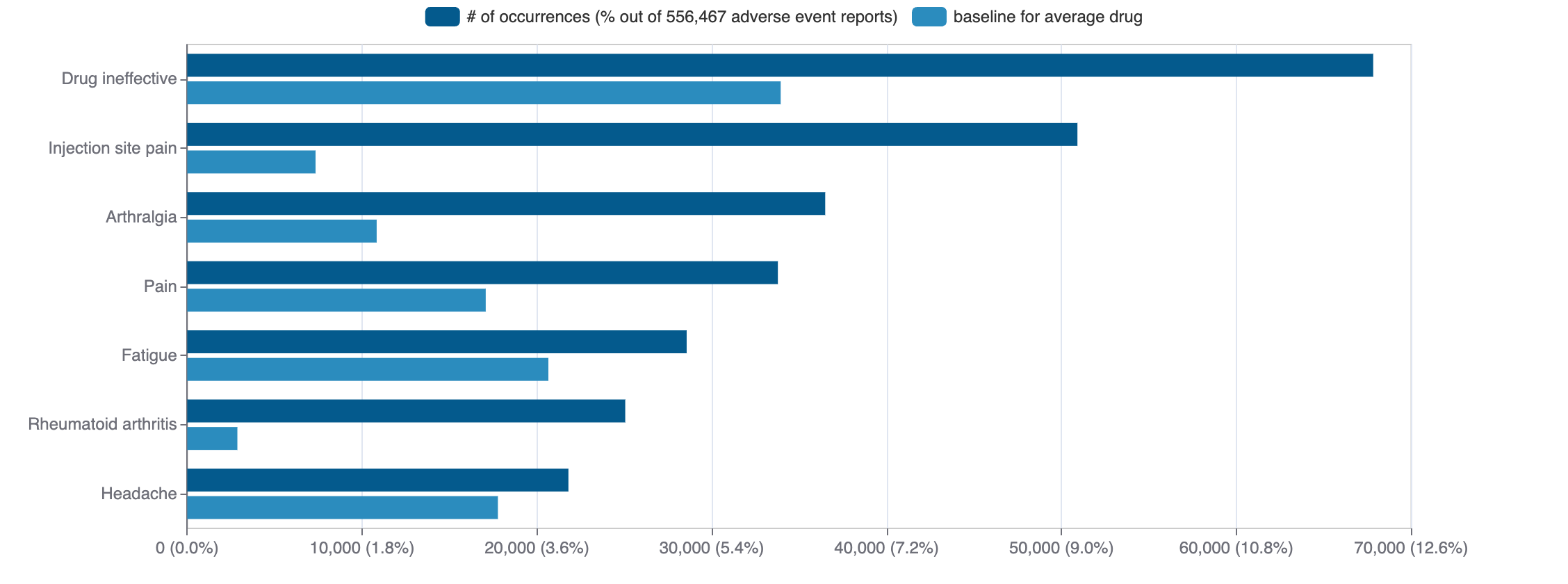Ornidyl, Vaniqa(eflornithine)
Ornidyl, Vaniqa (eflornithine) is a small molecule pharmaceutical. Eflornithine was first approved as Ornidyl on 1990-11-28. It is used to treat african trypanosomiasis, hypertrichosis, and protozoan infections in the USA. It has been approved in Europe to treat hirsutism. The pharmaceutical is active against ornithine decarboxylase.
Download report
Favorite
Commercial
Trade Name
FDA
EMA
No data
Drug Products
FDA
EMA
New Drug Application (NDA)
New Drug Application (NDA)
Abbreviated New Drug Application (ANDA)
Abbreviated New Drug Application (ANDA)
Labels
FDA
EMA
Brand Name | Status | Last Update |
|---|---|---|
| vaniqa | New Drug Application | 2018-01-29 |
Agency Specific
FDA
EMA
No data
Patent Expiration
No data
ATC Codes
D: Dermatologicals
— D11: Other dermatological preparations in atc
— D11A: Other dermatological preparations in atc
— D11AX: Other dermatological preparations in atc
— D11AX16: Eflornithine
P: Antiparasitic products, insecticides and repellents
— P01: Antiprotozoals
— P01C: Agents against leishmaniasis and trypanosomiasis
— P01CX: Other agents against leishmaniasis and trypanosomiasis in atc
— P01CX03: Eflornithine
HCPCS
No data
Clinical
Clinical Trials
35 clinical trials
View more details

Mock data
Subscribe for the real data
Subscribe for the real data
Indications Phases 4
Indication | MeSH | Ontology | ICD-10 | Ph 1 | Ph 2 | Ph 3 | Ph 4 | Other | Total |
|---|---|---|---|---|---|---|---|---|---|
| Hirsutism | D006628 | HP_0001007 | L68.0 | — | — | — | 2 | — | 2 |
Indications Phases 2
Indication | MeSH | Ontology | ICD-10 | Ph 1 | Ph 2 | Ph 3 | Ph 4 | Other | Total |
|---|---|---|---|---|---|---|---|---|---|
| Neuroblastoma | D009447 | EFO_0000621 | — | 3 | — | — | 1 | 4 | |
| Medulloblastoma | D008527 | — | 1 | — | — | 1 | 2 | ||
| Skin neoplasms | D012878 | EFO_0004198 | C44 | — | 2 | — | — | — | 2 |
| Prostatic neoplasms | D011471 | C61 | — | 2 | — | — | — | 2 | |
| Adenomatous polyps | D018256 | D28 | — | 1 | — | — | — | 1 | |
| Stomach neoplasms | D013274 | EFO_0003897 | C16 | — | 1 | — | — | — | 1 |
| Neoplasms | D009369 | C80 | — | 1 | — | — | — | 1 | |
| Uterine cervical neoplasms | D002583 | — | 1 | — | — | — | 1 | ||
| Esophageal neoplasms | D004938 | C15 | — | 1 | — | — | — | 1 |
Indications Phases 1
Indication | MeSH | Ontology | ICD-10 | Ph 1 | Ph 2 | Ph 3 | Ph 4 | Other | Total |
|---|---|---|---|---|---|---|---|---|---|
| Type 1 diabetes mellitus | D003922 | EFO_0001359 | E10 | 1 | — | — | — | — | 1 |
| Glioma | D005910 | EFO_0000520 | 1 | — | — | — | — | 1 |
Epidemiology
Epidemiological information for investigational and approved indications
View more details
Drug
General
| Drug common name | EFLORNITHINE |
| INN | eflornithine |
| Description | Eflornithine is a fluoroamino acid that is ornithine substituted by a difluoromethyl group at position 2. It has a role as a trypanocidal drug. It is a fluoroamino acid and an alpha-amino acid. It is functionally related to an ornithine. |
| Classification | Small molecule |
| Drug class | Fc fusion protein |
| Image (chem structure or protein) | |
| Structure (InChI/SMILES or Protein Sequence) | NCCCC(N)(C(=O)O)C(F)F |
Identifiers
| PDB | — |
| CAS-ID | 70052-12-9 |
| RxCUI | — |
| ChEMBL ID | CHEMBL830 |
| ChEBI ID | 41948 |
| PubChem CID | 3009 |
| DrugBank | DB03856 |
| UNII ID | ZQN1G5V6SR (ChemIDplus, GSRS) |
Target
Variants
Clinical Variant
No data
Financial
No data
Trends
PubMed Central
Top Terms for Disease or Syndrome:

Mock data
Subscribe for the real data
Subscribe for the real data
Additional graphs summarizing 1,648 documents
View more details
Safety
Black-box Warning
No Black-box warning
Adverse Events
Top Adverse Reactions

Mock data
Subscribe for the real data
Subscribe for the real data
47,229 adverse events reported
View more details
Premium feature
Learn more about premium features at pharmakb.com
Learn more
